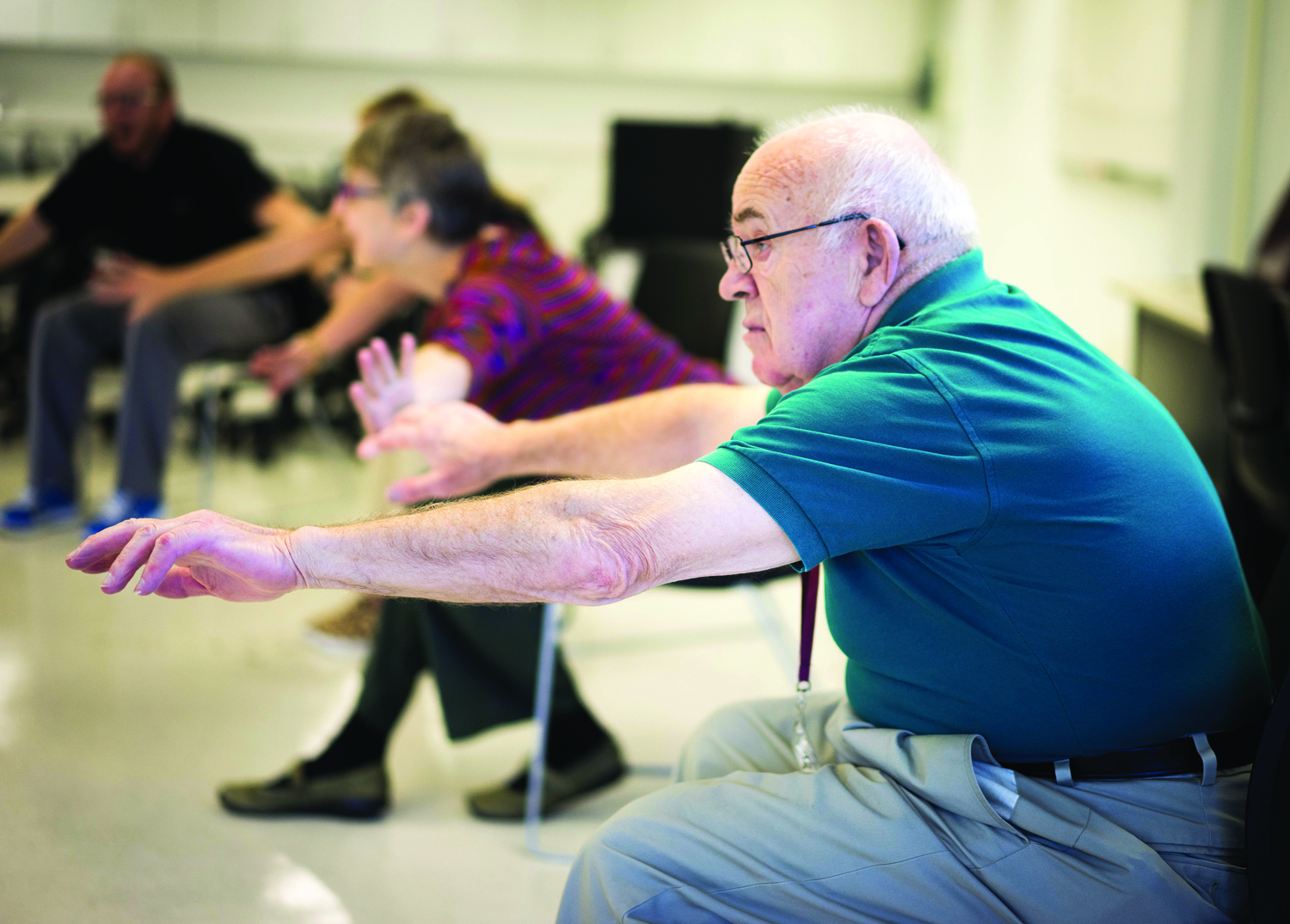BY HAYLEY PIAZZA
“Let’s Dance” is a class offered in Bellarmine University’s Nolen C. Allen Hall every Tuesday and Thursday. Patients with Parkinson’s disease learn to polka, salsa and waltz.
“The only requirement is you have to be able to laugh,” Dr. Nancy Urbscheit said about one of Bellarmine’s most unique classes.
Urbscheit, a professor in Bellarmine’s physical therapy department, teaches the class, along with Dr. Chantal Prewitt and other physical therapy (PT) students, as a service learning course.
The class began in 2010 as PT student Stacey Downs’ capstone project, which is similar to a thesis. Every PT student must research patient care or service and give a formal presentation on a specific topic to graduate.
“She [Downs] wanted to do a dance class with people with Parkinsonism. There was literature being published on the value of dancing as a therapeutic tool,” Urbscheit said.
The class was advertised through the Parkinson’s Support Center of Kentucky and began accumulating patients, or in this case, dancers.
“Most people think of therapy as work or exercise or ‘something I have to do,’ not necessarily always enjoying it. This kind of takes that away. You can breathe hard and sweat and still say you had a good time,” Urbscheit said.
PT student Jessica Ernestes said, “It’s really cool that we have the opportunity to work with patients in such a different manner than what is typical.”
Urbscheit leads the class through a stretching/movement warmup, followed by various ballroom dances and a cool down. The patients are paired up with a PT student or faculty member as they practice movements and learn to put them together.
“Everyone really enjoyed it, and I could tell the movement was something that freed them. The music allowed them to move in ways they couldn’t do around the house,” Urbscheit said.
The patients agree. Many come regularly to exercise and improve their dance skills and knowledge.
“Dance class is good because it helps with balance and coordination because you’re looking in different directions and moving your feet in different directions,” patient Jay Miller said. “One other thing that it’s good for is the social aspect of it, instead of sitting at home on the couch by yourself.”
The Parkinsonism varies in each patient. While some still have most of their mobility, others come in shuffling behind a walker. However, once the music plays, they are all moving right along with the steps.
“In spite of all the difficulties, they’re out there doing,” Urbscheit said.

